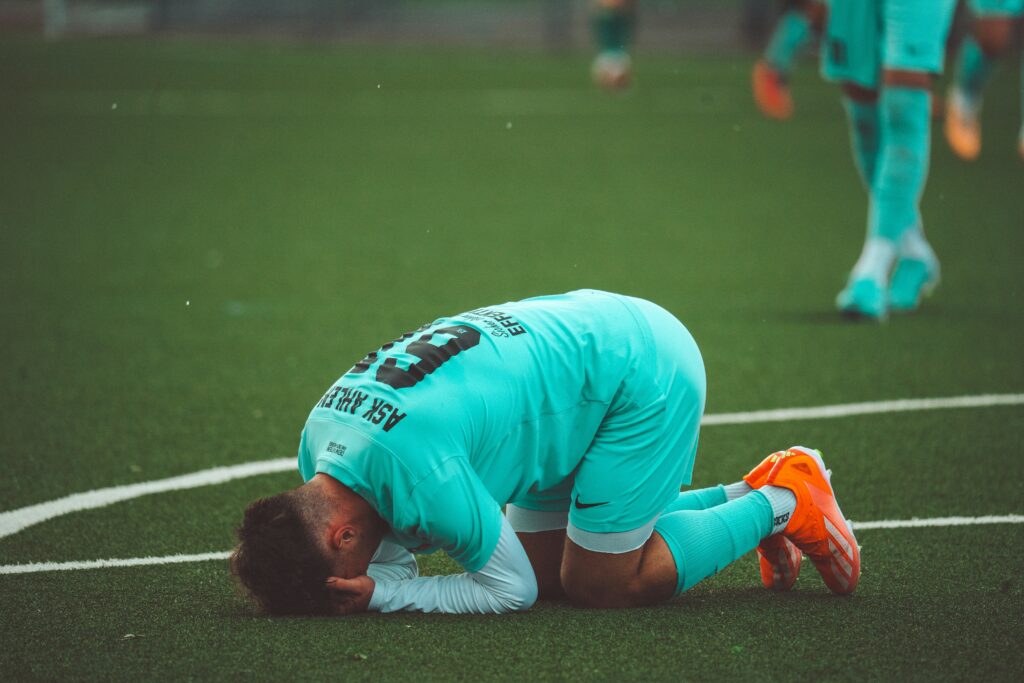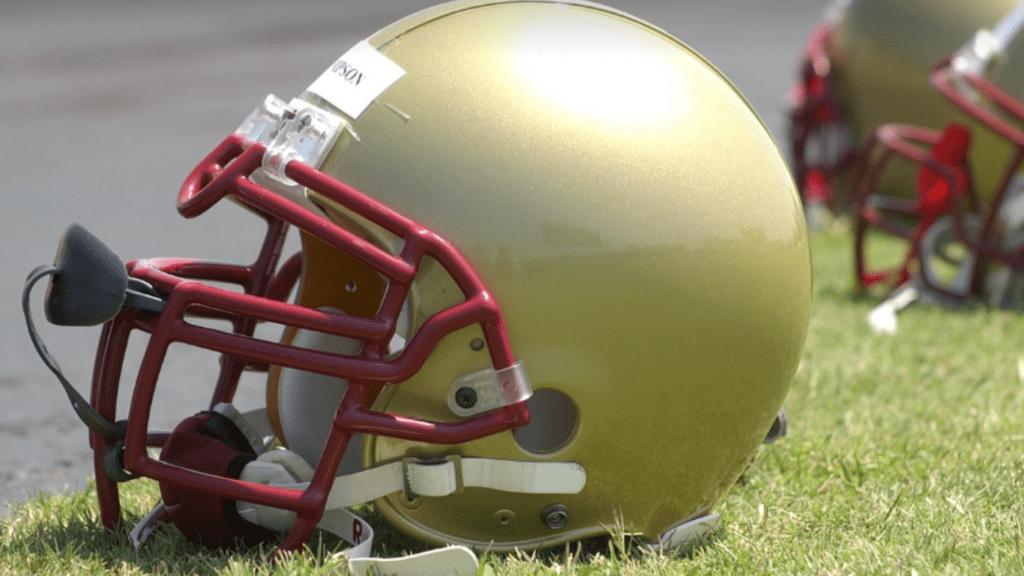Introduction: Why Mental Strength Sets Great Players Apart
Football is brutal in more ways than one. It’s not just the tackles and the long seasons that test players—it’s the moments off the ball. It’s riding the bench after weeks of grinding. It’s the late-night injury MRI. It’s scrolling through hate on social media after a missed penalty. Talent gets you in the door, but what keeps you on the pitch—year after year—is mental resilience.
The best players aren’t just smarter or faster. They can take the hit, on or off the field, and keep moving forward. They don’t spiral after setbacks—they reset. In a sport where form rises and falls like a heartbeat, the edge lies in mindset. The ones who stick around, who lead, who win? They’ve built something inside that holds steady when everything else shakes.
And that’s why in today’s football world, mental strength isn’t optional. It’s the real game-changer.
Recognizing the Types of Setbacks Players Face
Football careers don’t follow a straight line. Even the most talented athletes get hit with hard breaks. Injuries are a big one. A torn ACL or recurring hamstring issue doesn’t just sideline a player—it tests their patience, trust in their rehab process, and ability to stay mentally in the game while physically off the pitch. Long recovery periods can trigger doubt. Staying focused through that is its own form of endurance.
Then there are the mistakes. The missed penalty. The bad back-pass that costs the match. Football doesn’t let you forget. One error can make the highlight reel for the wrong reasons, and players have to face that—not just in their own heads, but from coaches, teammates, and fans. Rejection from squads or getting benched for a big game stings just as much. Especially when you’re grinding daily to prove your worth.
And if the inside pressure wasn’t enough, there’s the circus outside. Social media hot takes. Tabloid spin. Fans who forget you’re human. Public scrutiny is relentless, and it affects young players more than coaches like to admit.
These setbacks are heavy, but they’re also part of the job. Every player hits the wall—it’s what they do next that matters.
(Need a deeper dive? Check out mental strength after injuries)
Strategies Players Use to Bounce Back Mentally

Failure’s a given in football. A missed penalty, a red card, a bad run of form—it happens. The ones who last don’t hide from it. They treat failure like feedback. It’s not personal, it’s information. What went wrong? What can I adjust? Instead of spiraling, they analyze.
More players now work with sports psychologists. Not because they’re fragile, but because it gives them an edge. Mental fitness is performance, plain and simple. These pros help athletes process pressure, reset quickly, and stay focused on what matters.
Then there’s the individual work—the stuff no one sees. Meditation to stay calm. Visualization to prep for high-pressure moments. Journaling to get thoughts out of your head and onto paper where they lose their bite. They’re basic habits, but over time they build mental armor.
The big difference-maker? Routine. When setbacks hit, routine keeps the wheels turning. Morning habits, pre-match rituals, controlled recovery days. It takes the guesswork out of staying stable. Because bouncing back doesn’t mean doing something flashy. It means showing up with clarity and doing the work—even when things suck.
The Quiet Importance of the Locker Room
Resilience doesn’t just happen during training drills or in front of the cameras. A lot of it gets built quietly—inside locker rooms, during recovery periods, and in post-match debriefs. Trusted teammates aren’t just passing the ball—they’re the ones checking in when the headlines aren’t kind and the self-doubt creeps in. That kind of support isn’t flashy, but it’s foundational.
Veteran players play a crucial role here. They’ve been through the highs and lows, the injuries, the criticism, the doubt. Younger teammates watch how they carry themselves and lean into their guidance when things get tough. Whether it’s a few words after practice or silent example set through work ethic, the mentorship matters.
Coaches, too, are starting to meet the moment. More understand that resilience can be taught. Not every athlete walks onto the pitch full of mental strength—but with the right environment, it can grow. Coaches who combine tactics with patience, feedback, and emotional awareness help players develop not just on the field, but within.
For more ways teams are building stronger mental ecosystems, check out these team motivation strategies.
Final Word: Mental Strength is Trainable
Everyone Faces Setbacks
No matter how elite the athlete, no one dodges adversity forever. Setbacks are a part of every player’s journey—what makes the difference is how they respond.
Missed penalties
Long-term injuries
Being benched or dropped from the squad
Public criticism or harsh media narratives
These moments either break momentum or build resilience.
Resilience Is More Than Toughness
Mental strength isn’t just about pushing harder—it’s about adapting smarter. Today’s best players demonstrate not just grit, but:
Flexibility: Adjusting mindset, tactics, and expectations when the game changes
Focus: Zooming in on progress, not perfection
Mental resilience is often quiet, built in hours of private recovery, reflection, and recommitment.
Learning from the Failure
Players don’t erase setbacks—they integrate them. Every stumble can become a stepping stone if approached with intention.
Use failure as fuel for growth, not a reason to quit
Reflect on what happened, not why it happened to you
Let each tough moment sharpen, not shatter, your focus
“When the body recovers, it’s the mind that decides how far you go.”
To thrive in football’s relentless landscape, mental strength must be trained and practiced just like any physical skill.
Personal Stories: Comebacks Define Careers
Setbacks don’t discriminate. Some of the most celebrated footballers have hit rock bottom before climbing back to the top. Think of Mohamed Salah—let go by Chelsea early in his career, only to return to the Premier League and dominate with Liverpool. Or Kevin De Bruyne, once deemed surplus in England, now a midfield general. Then there’s Alexia Putellas, who came back from a devastating ACL injury to rejoin her national team with even more fire. None of these players just waited things out—they worked. Consistently. Quietly.
What ties these stories together isn’t natural talent. It’s mindset. These athletes believed they weren’t done yet, even when nobody else could see the comeback arc. They leaned into training, leaned on their support systems—coaches, family, teammates—and blocked out the noise that told them to quit. Instead of trying to prove people wrong, they focused on becoming stronger, mentally and physically.
Younger players watching can take a lot from this: your first failure doesn’t define you. But how you respond might. Build habits, find a good circle, develop grit. Comebacks aren’t about flash. They’re about showing up—and staying in the fight.

 Danielo Fleischeronic is the visionary founder of Awesome Football Network, a premier destination for in-depth football coverage and analysis. His commitment to the sport is reflected in the platform's rich content, which includes breaking news, match analyses, and expert commentary. Danielo’s extensive knowledge and passion for football drive the network’s mission to provide fans with the latest insights and updates from around the world.
In addition to his role as founder, Danielo is also an accomplished article writer. His writing covers a broad spectrum of football-related topics, from tactical breakdowns to player profiles, offering readers a comprehensive understanding of the game. Through his work, Danielo aims to enrich the football experience for enthusiasts and professionals, making Awesome Football Network a trusted resource in the football community.
Danielo Fleischeronic is the visionary founder of Awesome Football Network, a premier destination for in-depth football coverage and analysis. His commitment to the sport is reflected in the platform's rich content, which includes breaking news, match analyses, and expert commentary. Danielo’s extensive knowledge and passion for football drive the network’s mission to provide fans with the latest insights and updates from around the world.
In addition to his role as founder, Danielo is also an accomplished article writer. His writing covers a broad spectrum of football-related topics, from tactical breakdowns to player profiles, offering readers a comprehensive understanding of the game. Through his work, Danielo aims to enrich the football experience for enthusiasts and professionals, making Awesome Football Network a trusted resource in the football community.
